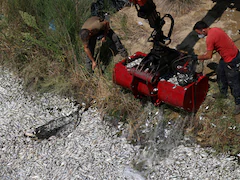Scientists have unravelled a doughnut-like structure buried deep within Earth's swirling outer core of molten metal. The exciting discovery was reported in a new study published in Science Advances.
The discovery was made by a research team that analysed seismic waves generated by large earthquakes. The expert team included Professor Hrvoje Tkalcic, a geophysicist from the Australian National University. These waves travel through Earth, giving scientists information about its internal composition.
As Professor Tkalcic explained, the researchers focused on how these seismic waves were slowing down while passing through a certain portion of the outer core near its boundary with the mantle.
"By understanding the paths of those waves and their travel times, we reconstructed their journey through the Earth's outer core," he added.
These waves were slower, indicating that a torus-shaped, or doughnut-shaped, region within the outer core was orientated parallel to the equator. This finds a new layer of complexity to the structure at the interior of the Earth.
The authors of the study write, "Thermochemical inhomogeneities in the Earth's outer core that enhance our understanding of the geodynamo have been elusive. Seismic constraints on such inhomogeneities would provide clues on the amount and distribution of light elements in the core apart from iron and nickel."
Disclaimer: The copyright of this article belongs to the original author. Reposting this article is solely for the purpose of information dissemination and does not constitute any investment advice. If there is any infringement, please contact us immediately. We will make corrections or deletions as necessary. Thank you.







